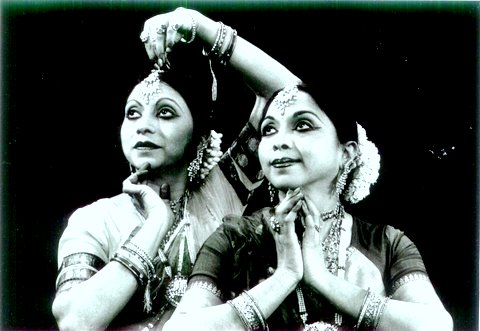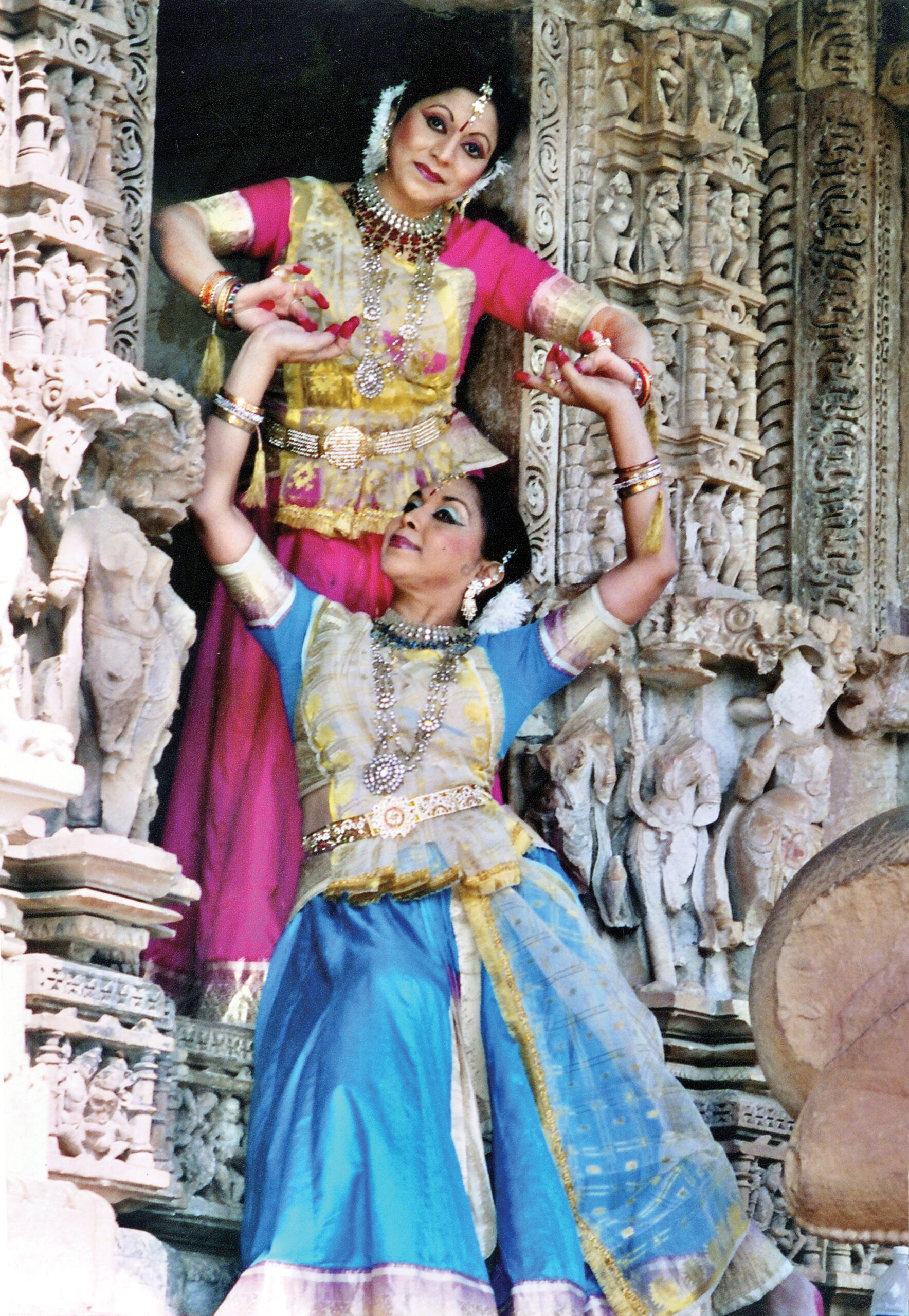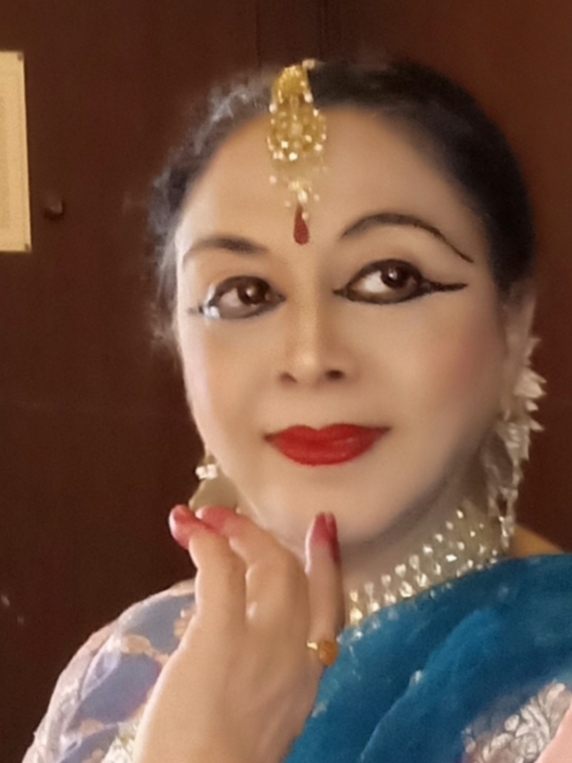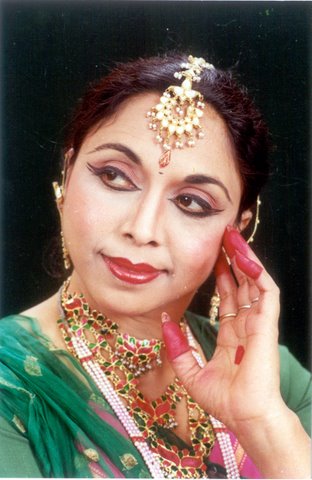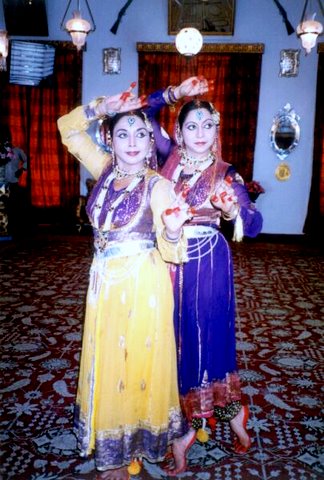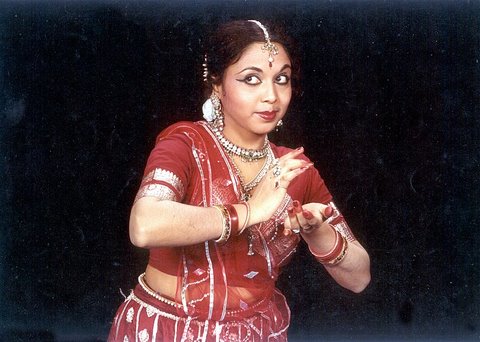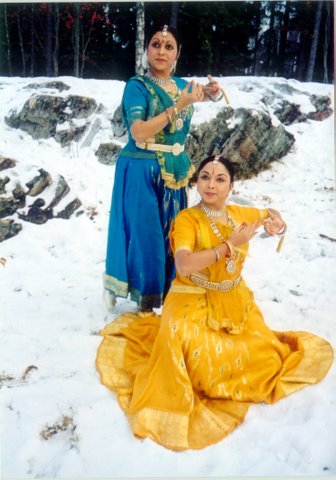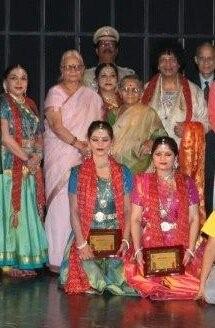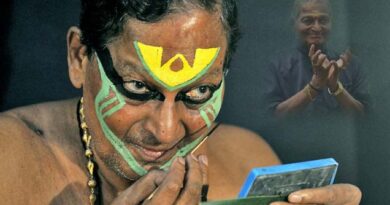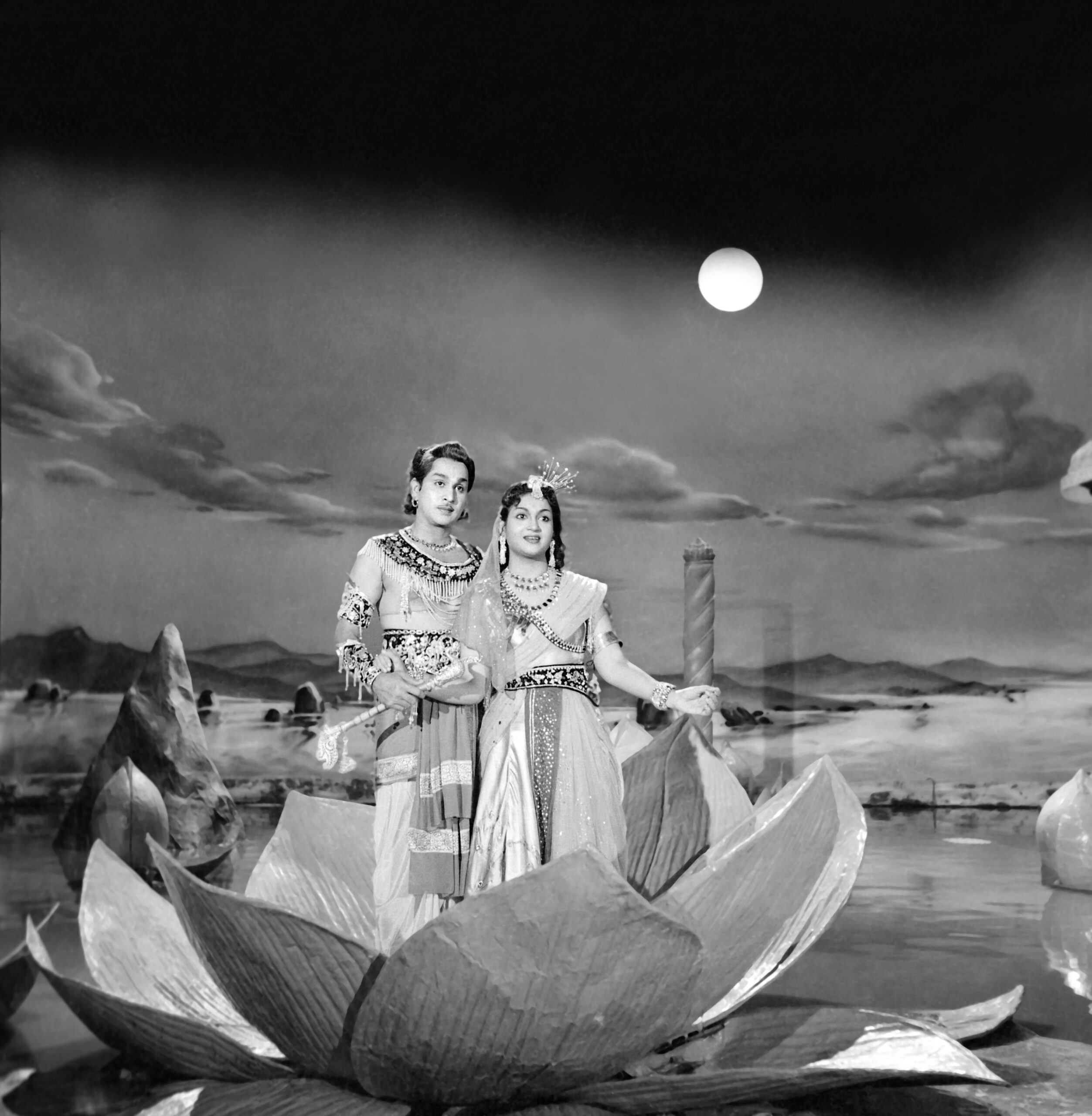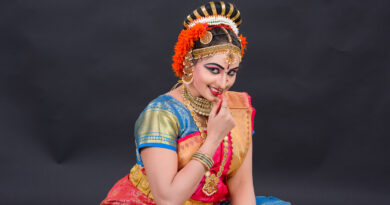Nalini Kamalini: True Cultural Ambassadors

Text: BR Vikram Kumar
Nalini and Kamalini are two inseparable names in the field of Indian classical dance. They have popularised duet category in Kathak by performing across the country and the world. They have been passionate about the dance form from their childhood and dedicated their lives to its propagation.Today, the duo stands at the pinnacle guiding and nurturing students in the art form of Kathak. Their effort in making Kathak popular around the globe is indispensable. Few people would want to become a classical artiste and those who become may not continue it over a prolonged period. . There are a handful of people who strive for excellence in their skill and upliftment of the art form throughout their lives. Nalini and Kamalini belong to such clan.
They set foot into the world of classical dance with the encouragement of their mother but grew up as artistes with the support of their guru. The duo epitomises dedication and hard work and works not for awards and rewards but for the love of Indian art and culture. They have refused to accept certain awards because they believe that their guru needs to be recognised. This desire to keep their guru first speaks volumes about their ethics and values. Even after all these years, they are striving to document their unique work to give to the next generation.
Nalini Kamalini: Two Bodies One Soul
Text: Paul Nicodemus
The sister duo, Nalini and Kamalini, made an indelible mark in the world of dance. The devoted disciples of Kathak maestro Guru Jitendra Maharaj of Varanasi gharana have encompassed boundaries and put the temple style of Kathak dancing on the world map. The sisters are blessed with rare artistic qualities of natural expression, grace, sweetness, clarity and perfection. Their style pleases both the aesthete and purist. Dharmik, Samajik and Prakritik are three aspects of their dance.
Both Kamalini and Nalini were born in Agra, Uttar Pradesh, as their father, BP Asthana, served in the Royal Air Force. Their grandfather served as Chief Justice and father being a part of the air force took part in the Second World War. Given the background, the atmosphere in the house was strict and disciplined. Though the family did not have a background in art, their mother, Shyama Kumari Asthana had an inclination towards fine arts and was a Hindustani vocalist herself. She is 87 years now. Despite the conditions of her time, when women could not pursue their interests, she did a double MA. Apart from the two girls, the Asthana family had two boys as well. The boys followed their father’s footsteps and joined the forces, while the mother wanted the daughters to become good vocalists.
Though they were born in Agra, they were brought up in Delhi. Both Nalini and Kamalini were groomed in Delhi Kannada School, run by the Mysore Government. Later, they joined Venkateswara college.
A chance meeting with Guru Jitendra Maharaj of Varanasi gharana changed their fortunes forever. The guru had a unique, magnetic and spiritual aura in his personality and it captivated both the sisters. “We never wanted to become artistes, but his personality impressed us. Gradually, we got in touch with him, kept watching his performances now and then,” says Kamalini. They first met their guru in Delhi when he was performing with his disciples.
Kamalini had an inclination towards science and Madam Curie was her role model. Nalini was interested in chemical engineering and Kamalini in medicine. “We always looked for logic and never really believed in illusion or art. Over time, we understood the depth of art,” says Kamalini.
Living with the guru taught them to know themselves and listen to the soul. “Initially, we did not go to our guru as we did not understand him much. He spoke about abstract art, gods and demigods. I was in class 7 and such discussions were beyond our standards. My mother made excuses to send us to him and as days passed, we started understanding him. He is a unique person. He never compelled us to do anything. He will just give you the flow and we are supposed to swim,” says Kamalini.
Nalini always gives the example of a magnet and iron filings. “If you have a magnet and iron filings and they do not attract each other, then, either the magnet is at fault or the filings are not made of iron. We were like iron filings and got attracted to guru ji and with time, we ourselves have become magnets,” says Nalini. This transformation took place when they were 13-14 years of age. “He was not like regular men, he was different — always calm and spoke of a higher realm. His way of communication was different. We found him to be a different person and got attracted to him. He had navarasas in his eyes. Soon, we found ourselves immersed in the flow. ‘Kala ka Jaadu’ – the magic of dance,” says Kamalini.
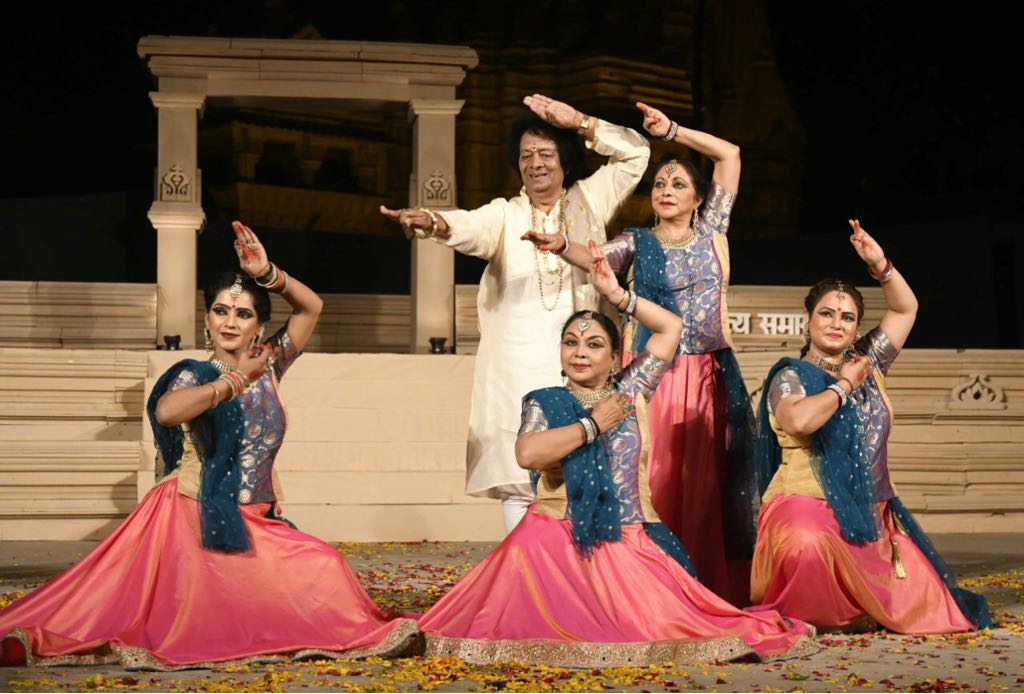
Guru Jitendra was an exceptional dancer with brilliant footwork. He is a trendsetter in the temple style of Kathak from the Varanasi gharana. The Banaras or Varanasi gharana took the patronage of neither Hindu nor Muslim courts. Dancers from the gharana were always in the temple, doing ashta seva. “Even today, when you visit, Vrindavan and Mathura you will find dancers and singers performing to please Krishna. It was like Devadasi performances in the south but in the north only men performed,” says Kamalini. The temple dance is derived from Bhakti Nrutya. Even the content is from Upanishads and the performances are soulful. Hence, the dance form has an emphasis on satvik abhinaya and chand pravarti. “Initially, we danced with pakhawaj and now that there are less number of players, we have been accompanied by tabla. Kathak is storytelling, but the content depended on the purpose — to please a king or god,” says Kamalini.
Nalini and Kamalini began learning from the guru in 1973 and the duo’s arangetram happened in Kochi, Kerala, when they travelled with their guru. “We gave our first performance at Ernakulam in Kerala,” says Nalini.
Nalini and Kamalini are of the same zodiac sign, Scorpio, just a year apart. Their nature is similar and so is the thinking process and approach. The two sisters shared a lot of affection. Guru Jitendra noticed it and made the ‘Yugal Nrithya’ (duet) for them. “Earlier people must have heard about the Travancore sisters but now, for over 40 years, we have been the only duet dancers of Kathak. Our dance style is unique and different from other dance forms. We dance like a shadow and never really dance apart,” says Kamalini.
The duo did not face difficulties because of their focus and determination. “Initially, I never wanted to learn dance but once I decided there was no looking back,” says Kamalini. They sacrificed their academic and professional careers to pursue Kathak. Nalini says their energy is doubled when they are together. The family supported them. Although the family initially spoke to them about marriage, they soon realised that the two were born for a higher purpose. Their father hoped to see them at the epitome. After touring the world for over five decades, Kamilini believes they fulfilled his dream.
Both of them learnt to dance on the stage. “It is like our guru ji pushed us into the swimming pool and we had no other option but to swim. We are married to our art form,” says Kamalini.
They accompanied the guru and his senior disciples wherever they went and as beginners, they performed initial items like Krishna Tumri. The guru discovered that these girls had expressive faces and made them do small parts in his repertoire and taught them on stage. For Nalini and Kamalini, learning and performing went hand in hand.
“I believe when you have good intentions god will provide with good culture, good circumstances and a good guru. Everything was positive and in favour of us. We submitted ourselves to God and guru. More than the dance we liked the presence of our guru — listening to him, talking to him, his vision, and his thoughts about life. It transformed our lives. He is a brahmachari and does not have sons or daughters. So he taught us like his own daughters. He gave everything with an open heart and taught us a lot,” says Kamalini.
People consider the sisters to be exemplary artistes who brought forth the essence of guru-shishya parampara.
In South India, they continued with the culture of Sabhas and programmes. The troupe toured for 30 odd shows at a stretch. “We had such a good time. Today, when we look at young artistes, they are flying by air and have managers. But in those days, we had to do everything by ourselves,” says Kamalini.
The remuneration received by the troupe those days was around Rs 500. They performed at many small villages and did their bit in spreading Kathak in the south. They got immersed in the south Indian environment. Travelling on train took them 3 days and the whole group did their Riaz and had productive discussions about music and dance while travelling. They thoroughly enjoyed their careers. Sometimes the guru composed brilliant pieces while travelling on the train. The icing on the cake was they had a thirsty audience who would come prepared to listen.
The duos first overseas trip happened in 1983 when they attended the UFTAA Conference in Paris, France. “We stayed at Le Meridien in Paris. Those days there were few five-star hotels in India except the Ashoka Hotel,” smiles Kamalini. It was an epic tour. They went on a 15 day trip to UFTAA Conference but returned to India after two-and-a-half years. They went to perform in the India Evening and from there the troupe went to Torremolinos and Madrid in Spain. Kathak of Varanasi gharana looked new to the Europeans and Guru Jitendra’s technique proved to be beautiful. The troupe then performed in Dublin, Ireland and met people from ISKCON in London. They liked the Bhakti Nritya and invited them to perform in their Rath Yatra in London. “The weather was cold and there was no proper place for practice. We hired a caravan, practised and toured in it. It was a golden period,” says Kamalini. They became members of the artiste guild and toured across Europe. One of their memorable performances was for BBC’s Eastern Eye hosted by Karan Thapar. Similarly, they have done many shows. They have also made a film titled ‘Voyage of Kathak’ for The Inner London Education Authority (ILEA). After the film, they have given lecture demonstrations in major educational institutions in London. The duo conquered Europe with their dance.
Nalini and Kamalini share a unique and inseparable bond with each other. “I never feel she is away from me. Whatever I know of myself, my sister already knows it. People call us two bodies, one soul. I feel I need no one in my life. When we are together, we are complete,” says Nalini.
“We have the same mind and revel in each other’s success. There is no jealousy between us. If she wears a nice sari, I am happy and vice versa. We care for each other, I just don’t know how it has come,” adds Nalini. More importantly, people enjoy watching them together.
Right from the beginning, they have been together; they worked together, danced together and travelled together. Now that Kamalini is the chairperson of Kathak Kendra, she goes to the institution and also attends meetings at Sangeet Natak Akademi. “I drop her at Kathak Kendra and do my work in my institution. Again, we join for lunch and have food. Recently, she was at Rabindra Bharati in Kolkata and I was at Pasighat in Arunachal Pradesh conducting a workshop with guru ji. Though we were away, we have been in touch with each other. Thanks to video calling, we can literally see what is happening on the other side. Even when we are away our minds and hearts work together,” says Nalini.
Talking about Kamalini’s work at Kathak Kendra, Nalini says, “I heard people say this is the best era for Kathak Kendra. Being an artiste, Kamalini is helping all the young artistes from various gharanas. Previously, there were performances only in Delhi but now she is organising performances in all the states of India. By giving importance to all the gharanas, she is trying to unite artistes across the country.”
Meanwhile, Nalini is working on the therapeutic value of dance. She believes that if the music and dance of the original Indian culture prevail, then there would be no disturbance in the society. “When you dance, you are in the Bhakti rasa and spiritual mind, which serves as meditation and helps in improving yourself. If an individual is improved then there is so special need to improve the society,” explains Nalini. She also believes that Indian dance is a combination of physical and spiritual yoga and she has extensively worked on the Relation of Dance with Yoga.
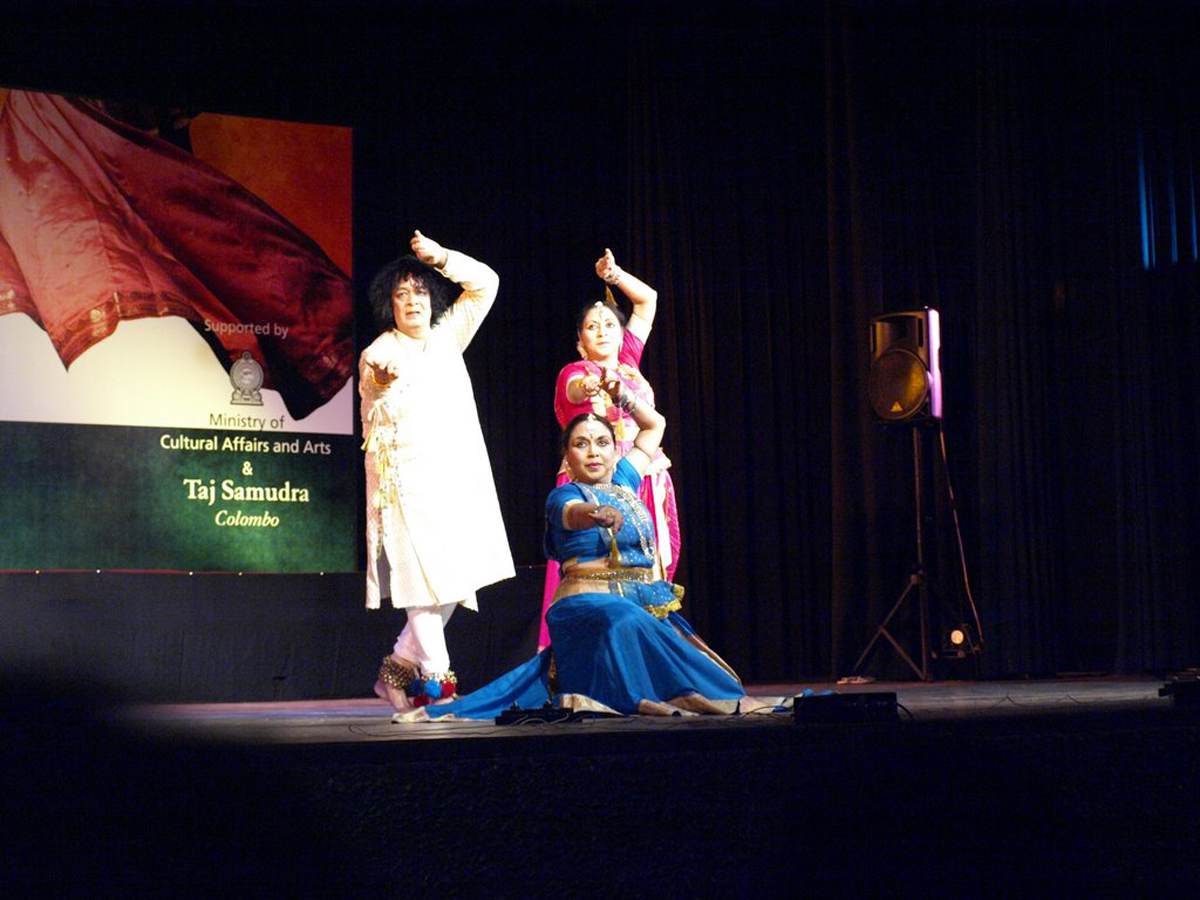
OLYMPUS DIGITAL CAMERA 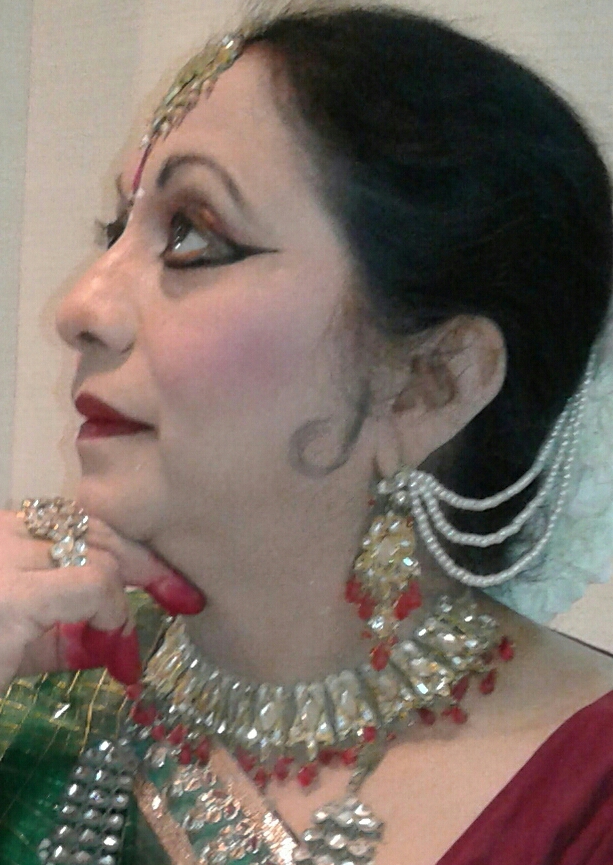
The duo has taken Kathak to new heights with their choreography on the themes from Vedas and Upanishads. They have transformed solo Kathak into a duet and group choreographies and added traditional, contemporary storyline into the Kathak repertoire. They have established Sangeetka Institute of Performing Arts, a premiere academy for Kathak and classical music on February 21, 1975.
Nalini is good at designing, makeup, gardening and cooking. After tasting food from many restaurants, she tells her best hotel is her kitchen. She likes to see happiness in everyone’s face. Kamalini loves walking close to nature. Listening to old songs, reading and writing are her hobbies. She also enjoys spending time with little children. Both of them love maintaining an ethnic looking house and whenever they get time, they love to visit the seashore or mountains. Sometimes they go trekking and indulge in discussion with Sadhus high in the mountains. Both of them enjoy cooking food and distributing it to the poor. The sisters do not charge remuneration when they perform at schools, temples, charity or for armed forces — another nice attribute.
Well versed in the allied arts of music and literature, the duo is as esteemed throughout India as they are abroad. Often they are invited to present their traditional form before visiting dignitaries in Parliament, Rashtrapati Bhavan and have taken part in several national and international festivals of repute in various parts of the world viz. UK, Germany, France, Spain, Norway, Finland, China and the Middle East. Lectures in Oxford, Cambridge, Lei Den, Manchester University, London School of Economics were of great success.
Another popular feat they achieved was by setting a record for dancing at the height of 18,000 ft at Kailash Mansarovar. They have performed at Badrinath, Rameswaram, Chidambaram, Tirupati, Vrindaban, Kanyakumari and at various ISKCON temples all over Europe, at one hand and at Dewa Sharif, Dargah of Bareilly, Ajmer and Kalia Sharif for cultural integration.
For their immense contribution, they have received various awards including Atal Samman and Sangeet Natak Akademi. Their contribution to society includes cultural integration, cultural awareness programmes amongst the youth, propagation of classical art forms in remote areas and teaching the lesser abled.
“When we plant a seed in the ground, it needs time to show its growth. Till then patience is the key. If you are devoted to work, you will get money. If you are not then you would not. Work is worship. Today, youngsters are concerned about the future and neglect their present. I always tell them to take care of their present as it would become their future,” says Nalini
“People who want to achieve something in life should be a vessel with focus locked on a single agenda. There should be no room for prejudice and nurture brotherly attitude towards others. Patriotism is important for every citizen. Youngsters should have high ambition but they should not look for shortcuts. This is our message to the youth of India. Nalini always tells the youngsters to be devoted to work,” says Kamalini.
At present, Kamalini is the chairperson of Kathak Kendra and Nalini is the director of Sangeetka Institute of Performing Arts.

